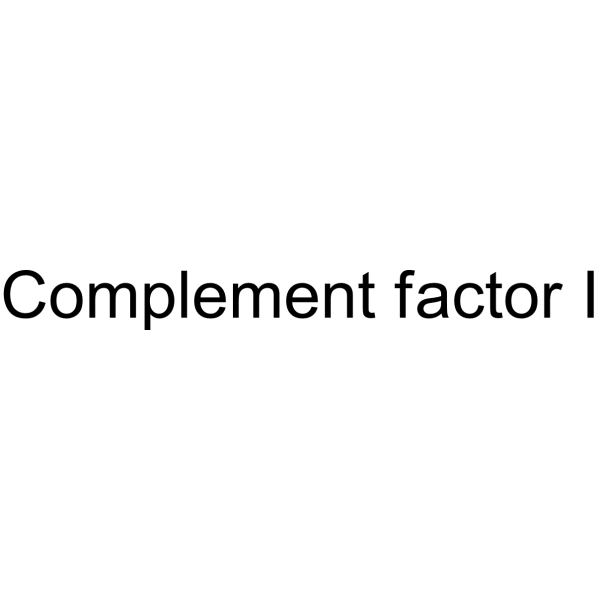complement factor i

complement factor i structure
|
Common Name | complement factor i | ||
|---|---|---|---|---|
| CAS Number | 80295-66-5 | Molecular Weight | N/A | |
| Density | N/A | Boiling Point | N/A | |
| Molecular Formula | N/A | Melting Point | N/A | |
| MSDS | USA | Flash Point | N/A | |
|
Rare variants in CFI, C3 and C9 are associated with high risk of advanced age-related macular degeneration.
Nat. Genet. 45(11) , 1366-70, (2013) To define the role of rare variants in advanced age-related macular degeneration (AMD) risk, we sequenced the exons of 681 genes within all reported AMD loci and related pathways in 2,493 cases and controls. We first tested each gene for increased or decrease... |
|
|
Molecular organization and function of the complement system.
Annu. Rev. Biochem. 57 , 321-47, (1988) The brain stem provides most of the noradrenaline (NA) present in the spinal cord, which functions to both increase spinal motoneuron excitability and inhibit sensory afferent transmission to motoneurons (excitatory postsynaptic potentials; EPSPs). NA increas... |
|
|
Mutations in complement regulatory proteins predispose to preeclampsia: a genetic analysis of the PROMISSE cohort.
PLoS Med. 8(3) , e1001013, (2011) Pregnancy in women with systemic lupus erythematosus (SLE) or antiphospholipid antibodies (APL Ab)--autoimmune conditions characterized by complement-mediated injury--is associated with increased risk of preeclampsia and miscarriage. Our previous studies in m... |
|
|
Eculizumab for dense deposit disease and C3 glomerulonephritis.
Clin. J. Am. Soc. Nephrol. 7(5) , 748-56, (2012) The principle defect in dense deposit disease and C3 glomerulonephritis is hyperactivity of the alternative complement pathway. Eculizumab, a monoclonal antibody that binds to C5 to prevent formation of the membrane attack complex, may prove beneficial.In thi... |
|
|
Factor I autoantibodies in patients with atypical hemolytic uremic syndrome: disease-associated or an epiphenomenon?
Clin. J. Am. Soc. Nephrol. 7(3) , 417-26, (2012) Atypical hemolytic uremic syndrome is a disease associated with mutations in the genes encoding the complement regulators factors H and I. In addition, factor H autoantibodies have been reported in ∼10% of patients with atypical hemolytic uremic syndrome. Thi... |
|
|
Cleavage of C4b by C3b inactivator: production of a nicked form of C4b, C4b', as an intermediate cleavage product of C4b by C3b inactivator.
J. Immunol. 125(2) , 578-82, (1980) We have investigated the mechanism of cleavage of C4b into C4c and C4d by the C3b inactivator (C3bINA) and revealed the formation of a nicked form of C4b as an intermediate cleavage product. The cleavage of C4b by the C3bINA was a two-step reaction. The first... |
|
|
Structural basis for complement factor I control and its disease-associated sequence polymorphisms.
Proc. Natl. Acad. Sci. U. S. A. 108(31) , 12839-44, (2011) The complement system is a key component of innate and adaptive immune responses. Complement regulation is critical for prevention and control of disease. We have determined the crystal structure of the complement regulatory enzyme human factor I (fI). FI is ... |
|
|
Complement factor I deficiency: a not so rare immune defect: characterization of new mutations and the first large gene deletion.
Orphanet J. Rare Dis. 7 , 42, (2012) Complement Factor I (CFI) is a serine protease with an important role in complement alternative pathway regulation. Complete factor I deficiency is strongly associated with severe infections. Approximately 30 families with this deficiency have been described ... |
|
|
Plasma levels of complement proteins from the alternative pathway in patients with age-related macular degeneration are independent of Complement Factor H Tyr⁴⁰²His polymorphism.
Mol. Vis. 18 , 2288-99, (2012) To investigate the influence of the Factor H (CFH) Tyr⁴⁰²His polymorphism on the plasma levels of the alternative pathway proteins CFH, C3, Factor B (FB), Factor D (FD), and Factor I (FI) and the inflammatory marker C-reactive protein (CRP) in 119 patients wi... |
|
|
Neisseria meningitidis NalP cleaves human complement C3, facilitating degradation of C3b and survival in human serum.
Proc. Natl. Acad. Sci. U. S. A. 111(1) , 427-32, (2014) The complement system is a crucial component of the innate immune response against invading bacterial pathogens. The human pathogen Neisseria meningitidis (Nm) is known to possess several mechanisms to evade the complement system, including binding to complem... |